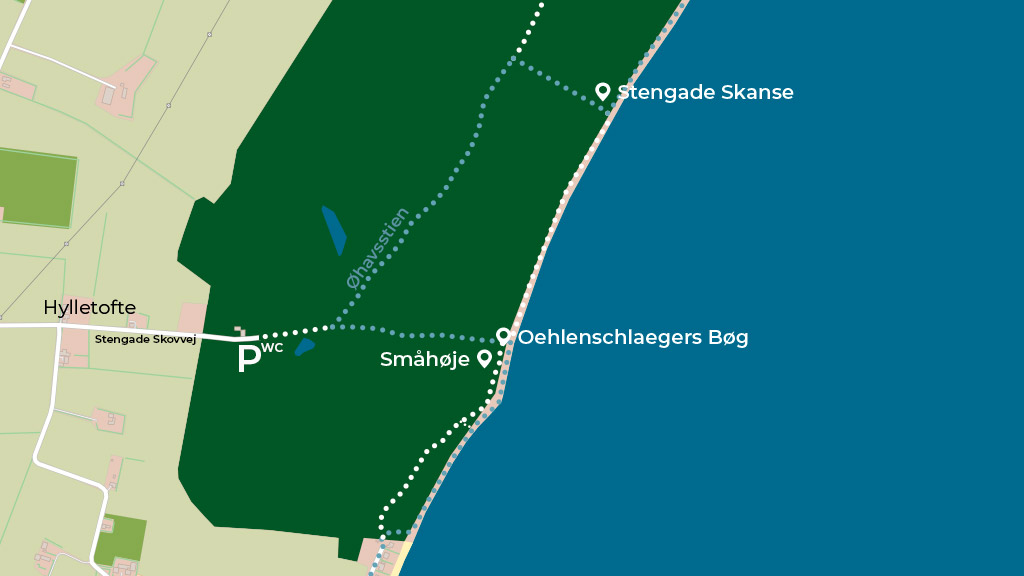
The Stengade Redoubt
The 6-sided defence complex is built during the English Wars (1807-14) and surrounded by an embankment and a 5 m wide dry moat
Stengade Skanse is one of many fortifications built along the Danish coast during the English Wars (1807-14). The 6-sided defence complex is app. 50 m (N-S) and 35 m (E-W) surrounded by an embankment and a 5 m wide dry moat.
In 1808, Napoleon deployed 13,000 Spanish soldiers to Denmark to secure the country against a British invasion. Later that summer Napoleon wanted to insert his brother as King of Spain and the Spaniards in Denmark decided to go home and fight for their country. It was secretly agreed that the English fleet would transport the Spaniards home from Stengade Strand. Over 9,000 Spanish soldiers from all over the country gathered on Langeland.
From February to August 1808, 1,200 of Napoleon’s Spa-nish soldiers were stationed on Langeland. The presence of the uniformed soldiers with brown eyes was perhaps especially noticed by the female islanders.

The mystery of the Spanish sabre
The story goes that a Spanish soldier had fallen in love with a young girl from Botofte, but the girl’s fiancé killed the soldier with the Spaniard’s own sabre.
In 2007, Langelands Museum received a sabre (pictured above) and sent it to Spain for examination. Experts conclu-ded that the sabre was used by the regiment from Catalonia that stayed on Langeland in 1808. Whether the sabre was used to murder an unhappily in love Spanish soldier remains unknown.
Walk to Stengade Skanse
From the car park at the end of Stengade Skovvej it is approx. 1 km to Stengade Skanse. Follow the path towards the water and turn left on Øhavsstien.
In Stengade Skov you will also find Oehlenschlaeger's beech and small mounds from the end of the Bronze Age or the beginning of the Iron Age. And a walk down to the beach with its beautiful beech trees is highly recommended.
More Hidden Stories
Discover more hidden stories from Langeland at www.govisitlangeland.com/past
The project Langelands Hidden Stories is supported by the Danish Outdoor Council and developed by VisitLangeland and Langelands Museum.
